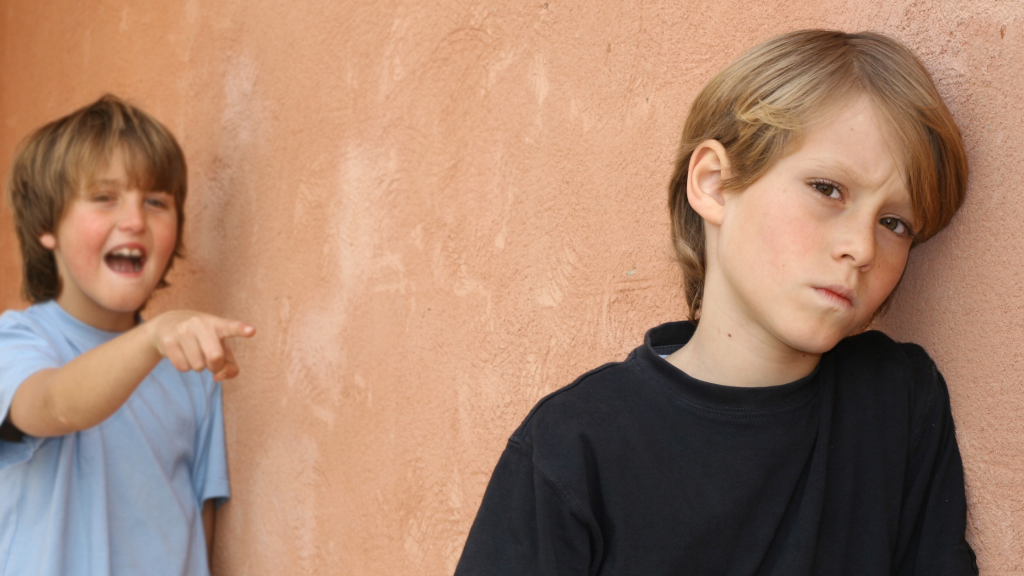Self-esteem is one of the most critical elements of a child’s mental health and personal development. It shapes the way children perceive themselves, interact with others, and navigate life’s challenges. Understanding the factors influencing self-esteem, specifically the causes of low self-esteem in childhood, is essential for parents, educators, and society.
What Is an Example of Low Self-Esteem in Children?
Low self-esteem can manifest in many ways in children, with signs varying depending on the child’s age, personality, and circumstances. Here’s an example illustrating low self-esteem in children:
Imagine a child named Ben, a bright and curious eight-year-old. Despite his potential, Ben often finds himself struggling academically. He’s slower than his classmates at reading and has a hard time understanding math problems. He often hears comments like, “You just need to try harder” or “Why can’t you be more like your sister?” These situations make Ben feel less capable and inferior to his peers, leading to feelings of inadequacy.
Ben is often afraid to participate in class or try new things, fearing mistakes and consequent embarrassment. He tends to isolate himself socially, preferring to stay in the shadows rather than face potential rejection or ridicule. He is overly critical of himself, frequently saying things like, “I’m just not good at this,” or “I’ll never be able to do it.”
At home, Ben’s parents notice he’s not the cheerful and lively boy he once was. He often seems unhappy and disinterested in activities he once loved. These changes worry his parents, and they decide to seek professional help to understand what’s happening.
In this scenario, Ben exhibits key signs of low self-esteem: self-deprecation, fear of failure, social withdrawal, academic struggles, and a general decline in happiness and enthusiasm. This situation underscores the importance of spotting these signs early to intervene effectively and boost the child’s self-esteem.
What Causes Low Self-Esteem in Childhood?
Low self-esteem in children can originate from various sources, ranging from the immediate environment to personal experiences and innate traits.
Negative Family Environment
A child’s family environment is their primary socialization source. Harsh criticism, lack of praise, or emotional neglect from family members can impact a child’s self-worth and confidence. High expectations and constant comparisons with siblings or peers may also contribute to feelings of inadequacy.
Social and Academic Pressure
School life significantly influences children’s self-esteem. Difficulty in academics, bullying, or feeling socially isolated can lead to a negative self-image. A lack of support or understanding from teachers and peers can exacerbate these feelings.
Personal Factors
Inherent personality traits like introversion, sensitivity, or traits related to physical appearance can also lead to low self-esteem if not nurtured positively. Children with learning disabilities, chronic illnesses, or physical differences may have a higher risk of developing low self-esteem due to their challenges.
Factors That Influence Low Self Esteem in Middle Childhood
Various factors can contribute to or exacerbate low self-esteem during middle childhood:
Peer Influence
The opinions and behaviors of peers significantly influence children’s self-esteem at this age. Bullying, exclusion, or social comparison can lead to self-doubt and decreased self-esteem.
Academic Pressure
Pressure to perform academically can cause stress and diminish a child’s self-worth, especially if they struggle to keep up with their peers or meet parental expectations.
Media Influence
In today’s digital age, media plays a substantial role in shaping self-perception. Unrealistic portrayals of beauty, success, and perfection can make children feel inadequate or flawed.
Consequences of Low Self Esteem in Middle Childhood
The middle childhood phase, which typically encompasses ages 6 to 12, is a critical period for social and emotional development. Low self-esteem during this phase can lead to several negative outcomes:
Poor Academic Performance
Children with low self-esteem often struggle academically. They may doubt their abilities, leading to reduced effort and, eventually, poor performance. This can create a vicious cycle of failure and further decline in self-esteem.
Social Isolation
Children with low self-esteem may withdraw from social interactions due to fear of rejection or humiliation. This isolation can lead to loneliness and may even contribute to the onset of mental health conditions like depression and anxiety.
Risk-Taking Behaviors
Children with low self-esteem may engage in harmful behaviors such as substance abuse or delinquency to fit in or seek approval. They might also become victims of peer pressure, leading to poor decision-making and dangerous situations.
Long Lasting Effects of Low Self Esteem in Childhood
If not addressed promptly, low self-esteem during childhood can leave long-lasting impacts, influencing adult life significantly.
Mental Health Issues
The link between childhood self-esteem and adult mental health is robust. Low self-esteem can predispose individuals to mental health conditions such as depression, anxiety, eating disorders, and substance abuse later in life.
Relationship Challenges
Adults who had low self-esteem in childhood often struggle with personal relationships. They may have difficulty trusting others, communicating effectively, or expressing their needs due to lingering insecurities.
Therapy for Low Self-Esteem in Childhood
Therapy can play a pivotal role in improving a child’s self-esteem. Cognitive-behavioral therapy (CBT) is commonly used to help children identify negative thought patterns and develop healthier, more positive ones. Group therapy can also be beneficial, providing a supportive environment for children to express their feelings and learn from others’ experiences.
Family therapy may be recommended to address family dynamics contributing to a child’s low self-esteem. This can involve helping parents foster a more positive and supportive home environment.
Conclusion
So, what causes low self esteem in childhood? To sum up, low self-esteem in childhood stems from a myriad of factors, including family environment, academic pressures, personal traits, and societal influences. These elements can significantly affect a child’s development, leading to poor academic performance, social isolation, risk-taking behaviors, and long-lasting impacts on mental health and relationships in adulthood. Recognizing and addressing these causes promptly can help mitigate the adverse effects and promote healthier self-perception among children. Therapeutic interventions, such as cognitive-behavioral and family therapy, can significantly assist this process. The role of parents, educators, and society is pivotal, as their support, understanding, and positive reinforcement can substantially contribute to fostering high self-esteem among children. Thus, a concerted effort on all these fronts can help children develop a healthy, robust sense of self, which is crucial for their overall well-being and success in life.

